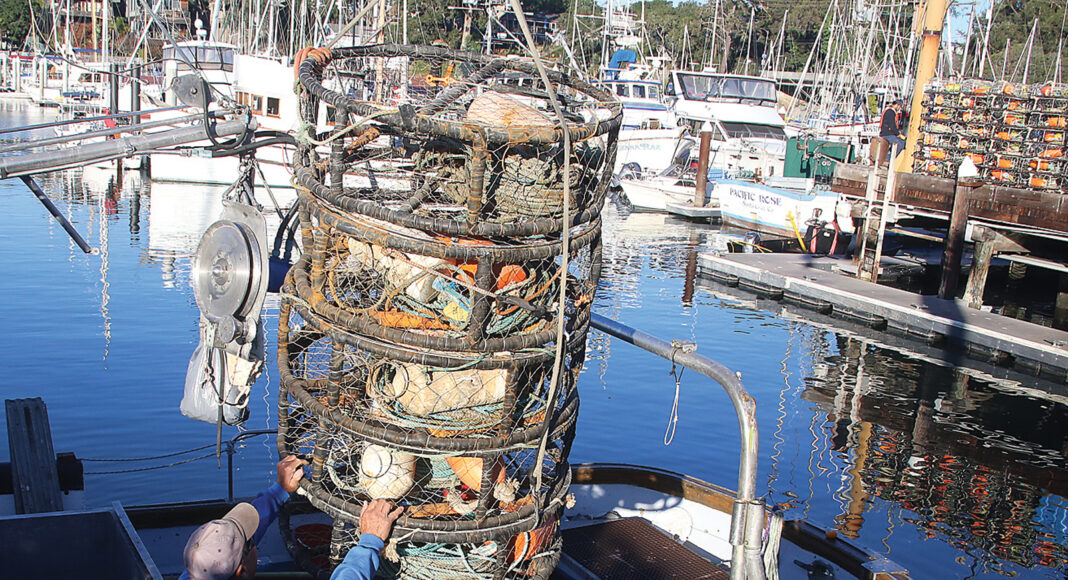New Year’s Eve marked more than just the start of 2023 for fishermen on the central coast. It was also the start of the commercial Dungeness crab season.
The fishery traditionally opened around November 15, but the California Department of Fish and Wildlife (CDFW) has delayed the season in recent years in an effort to reduce the number of whale entanglements. CDFW followed the delay this year with a 50% gear reduction, meaning fishermen must keep half their allotted traps on board.
Vertical fishing lines connect crab pots on the seafloor to buoys on the surface. The lines can entangle animals and pose dangers to three federally endangered species: humpback whales, blue whales and Pacific leatherback sea turtles.
In 2015, California created the Dungeness Crab Fishing Gear Working Group to address the entanglements. The group includes fishermen, scientists and nonprofits working together to make management recommendations to CDFW.
When a certain number of whales are spotted in a fishing zone, the group might recommend closures, trap reductions or depth restrictions.
The trap reductions are new.
“This is still kind of a test case,” says Geoff Shester, the California campaign director and senior scientist for the conservation organization Oceana. “It’s never really been tried before.”
Tim Obert, the Vice President of the Santa Cruz Commercial Fishermen’s Association, says many fishermen voted for the trap reduction, viewing it as better than further delays.
“If we don’t have entanglement issues with 50% gear reduction, maybe we can use that before the holidays next year, and then the guys can make up for some of the last years by getting a little more money per pound for the crabs,” he says.
One alternative to delays and gear reductions could be new rope-less traps that don’t use vertical lines. But many fishermen remain skeptical.
“It’s good for certain areas,” says Obert. In places with few boats like Monterey Bay, “you could have all 15 guys interact with each other and be proactive in letting each other know where they’re fishing.”
But he says things could get chaotic in areas with hundreds of boats, such as Halfmoon Bay and San Francisco. Without surface buoys, fishermen might unknowingly drop traps onto others, potentially causing malfunctions or waste.
Cost is another challenge.
“No one can afford it,” says Obert, adding that the new high-tech crab pots can cost anywhere from around $400 to $3000, while more traditional traps are typically under $300.
But Shester remains hopeful.
“With some collaboration, we haven’t seen a single one of these challenges or reasons not to use the gear that can’t be addressed by working together and providing funding opportunities,” he says.
In the meantime, Obert encourages anyone looking to buy crab to support local markets.
“We’re trying to be as safe as we can every day on the water,” he says. “But it’s tough to make a living like that sometimes.”













